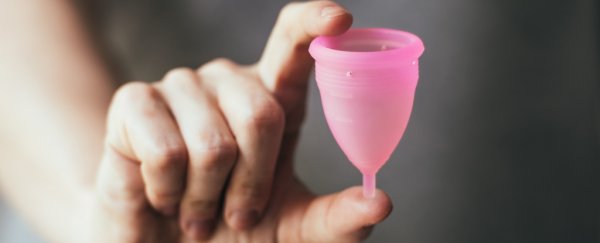In the last few years, menstrual cups have emerged as an eco-friendly alternative to disposable pads and tampons. Rather than absorbing menstrual blood, these flexible silicone cups collect it from within the vagina, and because they can last for up to 10 years, they are much cheaper than buying thousands of single-use products.
Yet even though menstrual cups have slowly grown in popularity, many women, girls, and transgender people do not know they are an option, and others remain skeptical that they even work or are safe.
The first systematic review of the international use of menstrual cups should put some of that fear and reluctance to rest. According to the current literature, menstrual cups are cheaper, greener and just as safe and effective as other menstruation products.
Analysing 43 studies, encompassing data from 3,300 females, the review suggests that menstrual cups are a legitimate option for handling menstruation, regardless of income, access to water or sanitation facilities.
The authors admit that the quality of the studies included in the review are a limitation, with only three assessed to be of good standard. But this says more about the state of menstrual product research in general, which is severely lacking and has been for decades.
"Despite the fact that 1.9 billion women globally are of menstruating age—spending on average 65 days a year dealing with menstrual blood flow, few good quality studies exist that compare sanitary products," says senior author Penelope Phillips-Howard, a public health epidemiologist from the Liverpool School of Tropical Medicine in the UK.
"We aimed to address this by summarising current knowledge about leakage, safety, and acceptability of menstrual cups, comparing them to other products where possible."
The research combined medical studies and grey literature, such as abstracts, reports and theses, with global information on menstrual cups, such as use, cost, publicity and waste.
Of the four studies that made direct comparisons between sanitary products, cups, pads and tampons were all found to be similarly effective. In fact, one study found that leakage was significantly less when menstrual cups were used.
Not only that, but these bell-shaped plastic cups also appear to be quite safe. Data from 370 females found no abnormalities in the vagina or cervix following its use. Plus, there were no adverse effects on vaginal flora, and there was no increased risk of infection among European, North American or African women and girls.
Toxic shock syndrome (TSS), a potentially fatal disease caused by an overgrowth of toxic bacteria, was found in five cases. This number seems low, the authors, say, but because the overall number of menstrual cup users is unknown it's hard to say how clinically relevant those numbers truly are, especially in comparison to other causes of TSS, like tampons.
Among 604 girls in Kenya, for instance, no adverse event or TSS was detected with menstrual cup use.
Because of its apparently low risk and its myriad rewards, the authors of the review think the menstrual cup could help combat "period poverty" in low-income situations. Not only are these alternatives cheaper over time, a few studies suggest they might require less water than cloths, pads, tissues, or other makeshift materials commonly used in Africa.
"Even in situations where there was less water available, like in refugee camps, [people] figured out how to [clean] menstrual cups with less water," Phillips-Howard told NPR.
Nevertheless, awareness remains low, and even in high-income countries, the review found that only 11 to 33 percent of females know these products are an option. What's more, those that do often cite worries about pain or reproductive consequences.
Much of this is probably due to ignorance. Among 69 websites containing educational materials on puberty in 27 countries, the authors found that 77 percent mentioned disposable pads and 65 percent mentioned tampons, while only 30 percent mentioned menstrual cups.
Still, when menstrual cups are introduced with some form of education and training, far more people are willing to consider them. Thirteen studies analysed in this review suggest that around 70 percent of females wanted to continue using menstrual cups once they were familiar with how to do so.
"This systematic review suggests that menstrual cups can be an acceptable and safe option for menstrual hygiene in high-income, low-income, and middle-income countries but are not well known," the authors conclude.
"Our findings can inform policy makers and programmes that menstrual cups are an alternative to disposable sanitary products, even where water and sanitation facilities are poor."
The research has been published in The Lancet.
